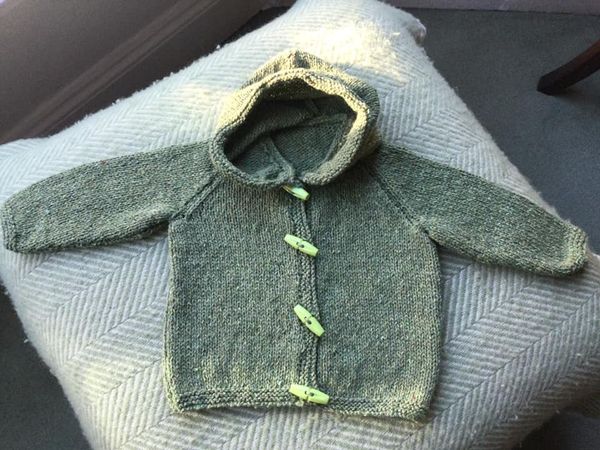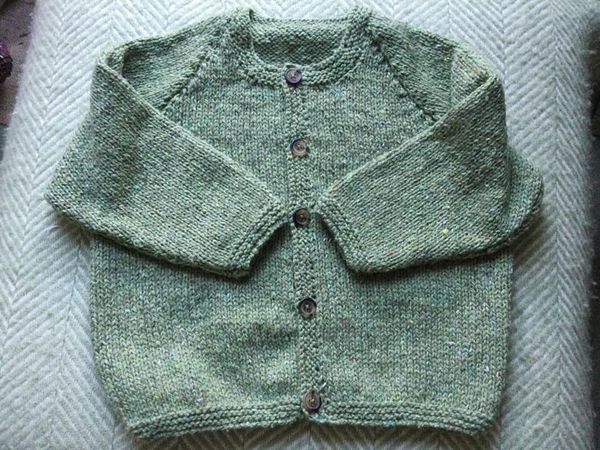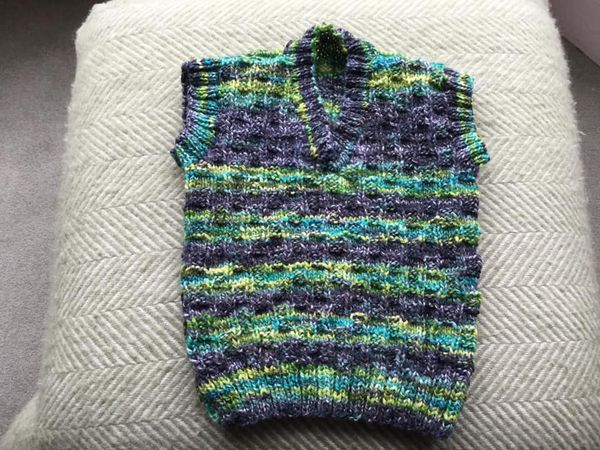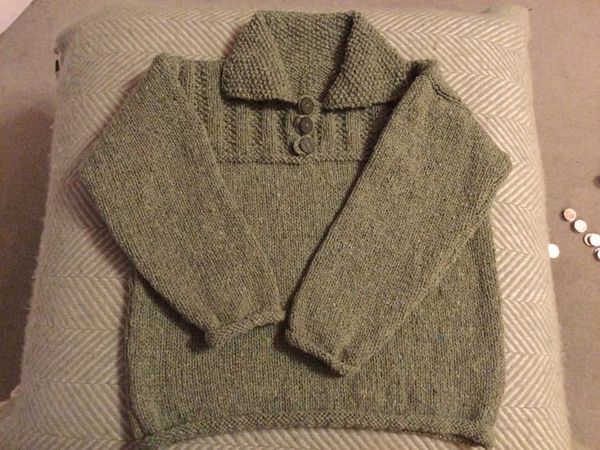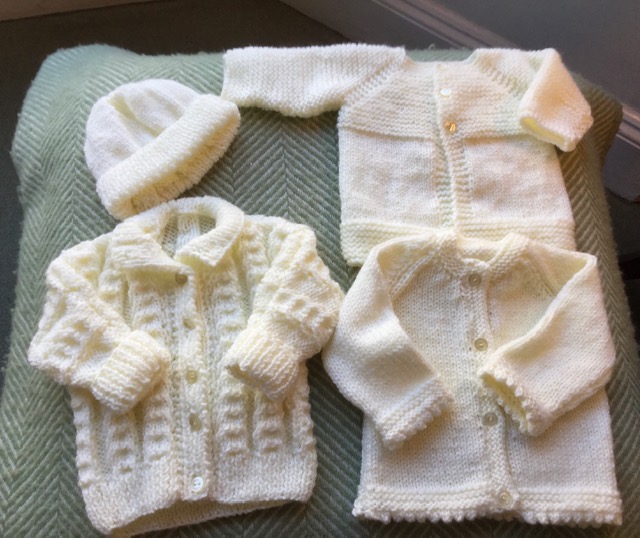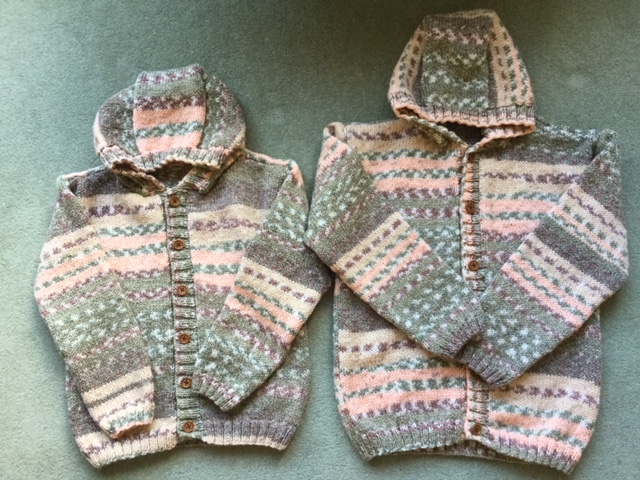Editor: The Revd Canon Derek Earis
Contents
- LETTER FROM A NEWLY-OCCUPIED VICARAGE/RECTORY by Revd Liz Hassall
- COVID INOCULATIONS by James and Joanna Finlay
- APPRECIATING SMALL THINGS by Jane Lockley
- LOCKDOWN CRAFT CORNER by Tina Sanderson
- IN PRAISE OF THE DAILY SERVICE by Revd Derek Earis
- GOOD THINGS FROM THE PANDEMIC FOR ALL SAINTS PAVEMENT by James Ratcliffe
- WARRENS by Iain Milne
- ST JOHN STREET WHATSAPP GROUP by Revd Derek Earis
- CHRISTMAS QUIZ SOLUTIONS
In this edition of Touch Base our contributors have shown how creativity has sustained them through the pandemic. Do you have any examples of finding good amidst the pandemic that you would like to share?
LETTER FROM A NEWLY-OCCUPIED VICARAGE/RECTORY by Revd Liz Hassall
Dear friends,
Moving house and changing job is a challenging undertaking at the best of times. I think we can all agree that the middle of a pandemic is not the best of times but your warm welcome has made all the difference for us. Despite the various challenges of the past year, I have found that it has definitely not all been bad: hence the theme of this issue of Touchbase.
Back in March and April 2020 there were a lot of messages flying about my corner of the internet saying things along the lines of ‘we are all in the same boat’. Superficially, it may have looked that way: we were all operating under the same government restrictions. In reality, however, different people have had vastly different experiences. A better metaphor is that we are all travelling the same ocean, but in very different vessels. Your experience of this past year will vary depending on whether your situation is more like being on a rickety raft or a sleek yacht.
In looking for the good that has come out of this past year, I do not want to minimise the suffering that many have experienced but I hope we can recognise that, even in the worst situation, there are glimmers of light breaking through and piercing the darkness. Throughout the letters of the New Testament, you can find accounts of Paul and other early Christians who suffered deeply yet found in their sufferings a new strength and a deeper faith in Jesus. It is probably too soon to tell, but I hope that we will also find ourselves changed and our faith tested and made stronger by everything we (across the world) have shared this year.
Some of my experiences this year have been contradictory. Take churchgoing as one example. I have always taken for granted that I live in a country where I am free to express my faith as I choose. Removing the right to access church buildings was a sudden loss for which I was not prepared. Perhaps, in the future, I will value being able to go to church more than I ever have in the past, knowing that it is a privilege that is not always there. More than that, being able to worship virtually with people across the world was a real gift. At various times, praying with the brothers of Taizé or worshipping with churches from decades past has been a lifeline.
The discovery of Zoom (other video-conferencing options are available) has been extraordinary. It is remarkable how much it is possible to do via screen. You can interview for a new job, you can hear interesting lectures, you can enable a group of eight year olds to draw pictures together, you can quiz or chat or drink together. I have seen people on screen and spent time with them who I haven’t seen in the flesh for years. The strange thing is that the technology was there already but we just weren’t using it. And yet… I find I can’t quite leave this as a wholly positive paragraph. Despite the advantages, we miss so much through not being in person.
What else has been good? Well, I have never enjoyed exercise beyond a leisurely stroll or cycle. When lockdown happened, I was, unenthusiastically, a month into the couch to 5k programme. Suddenly being told that it was only permitted to exercise once a day tapped into a vein of stubbornness which resulted in exercising nearly every day (rather than every four or five days). I persevered and discovered that running could be enjoyable (apart from running uphill – I’m still not convinced by that).
As you read the rest of this issue, I encourage you to take these stories as inspiration to re-examine your last year and see what unexpected goodness you can find. God is at work in all our lives and, if you look hard enough, you may find something that surprises you.
Lockdown 3, as we are currently experiencing it, is hard. Many of us have been working flat out for a long time. Winter nights and the cold and ice make me look back at the summer lockdown with rose-coloured glasses – and I’m sure it is the same for many of you. I am really sad that we have had to pause our gathering for worship in our church buildings but we will return and, one day, we will sing praises to God together again and appreciate it more than ever before.
With every blessing for the coming weeks,
Liz
COVID INOCULATIONS by James and Joanna Finlay
One good thing to come out of Covid has been the extraordinary dedication by scientists to find suitable vaccines as a way out of the Pandemic. Normally such vaccines take years to develop and the whole area is both complex scientifically and needs the greatest of care to ensure public safety. All of these have been achieved in record time and there are now available and approved three vaccines – the Pfizer/BioNTech vaccine for COVID-19 approved by The Medicines and Healthcare products Regulatory Agency (MHRA) and the Oxford/AstraZeneca vaccine for COVID-19 approved by MHRA GOV.UK. The Moderna vaccine for COVID-19 has now also been approved by MHRA and will come on stream soon. More about the vaccines and their effectiveness and how the rollout will be achieved can be found on the Government web page:
Coronavirus (COVID-19) vaccine – NHS (www.nhs.uk)
Here is an account from James Finlay (Churchwarden at All Saints Pavement) and his wife Joanna (PCC Secretary) on their inoculation.

COVID INOCULATIONS
Joanna and I were both pleasantly surprised to receive texts on the afternoon of Friday 15th January telling us that we were eligible to book an appointment to receive our first COVID inoculations. The text directed us to the online booking site which was very simple and straight forward to navigate and after a few minutes our appointments were booked for the following day, Saturday 16th at the Askham Bar Park and Ride site at 1.15pm. At the same time, we were given our appointments for the follow up injection in early April.
We arrived at Askham Bar a few minutes early. The site was very clearly signed and there were plenty of volunteers to direct the traffic. We parked up and were immediately asked to go into the centre where we were quickly and efficiently ‘booked in’. The next step was the jab itself and we were directed into cubicles where the procedure was clearly explained, and the jab administered. After that we were required to sit in the waiting area for the statutory 15 minutes to ensure we did not have any severe adverse reactions and I am glad to say we did not. 25 minutes after arrival we were in the car heading for home. I am also glad to say that neither of us suffered any adverse reactions after the injection.
The whole process from receiving the initial text to arriving back at home was painless, simple straightforward and highly efficient. The professional, military and volunteer staff at Askham Bar were all cheerful, thoroughly helpful and highly efficient. It was noticeable how much careful attention and assistance was being given to a number of elderly people who were there. I cannot praise them enough.
James and Joanna Finlay
APPRECIATING SMALL THINGS by Jane Lockley
We hear so much these days of the weariness of lockdown, the isolation, lack of stimulation and purpose, all of which exacerbated this third time with the dark hours and poor weather of winter, restricting us even more. Though we yearn for the time of being freed from these restrictions, we know that we have to suppress our frustrations and find patience in the waiting. We are urged to concentrate on small things now we have time, learning to appreciate what we may not have noticed before.
On our daily walks, mostly the same circuits, like so many people Simon and I have been watching the seasons. We note the varying architecture of the buildings we pass, stopping to read a plaque or looking at an oddity that strikes us. We have been learning more of how our suburban neighbourhood has developed over time and discovering bits of its history. On our occasional bike rides we observe the changes in the sky and the cloud formations, the sense of space and the long views over the waterlogged fields, ever changing but ever the same.

What we also see, though, is the amount of litter discarded along the pavements, or when on our bike rides, in the hedgerows and verges, not just unsightly but also a hazard to health and wildlife. We now take with us a bag and wearing gloves pick up bottles, cans and packaging, either to empty in the nearest bin or to bring home for recycling; our own small statement of care for the environment and for others who have to share it with us. If you too are concerned about the litter, you can report particular issues on the City of York Council website .
Also, to while away the long hours of these winter evenings with something constructive, I have started to knit squares with the intention of making a blanket. Having begun the project, I realise that I shall need well over 100 squares to make something of a reasonable size! A rather daunting prospect, but with help from others, I hope that we can offer it to someone who is struggling and in need of warmth and comfort. I hope that our knitting will convey a sense of our care and concern.
If any knitters would like to join me in my endeavour, I would be very pleased to have your help. If so, I would suggest that to maintain some consistency (easier to sew them all together later on) we all follow the same format. I am making 6”/15cm squares and use Double knitting Yarn with 4mm needles. I knit a diamond shape, casting on three stitches (plain knit) and increasing a stitch at the beginning of each row for six inches, (approx 42 rows at my tension). I then decrease one stitch at the beginning of each row until the last three when I cast off. If you have any questions do please get in touch – janehlockley@gmail.com.
These are some ‘small things’ which are a part of my lockdown activities and will hopefully see me through until easier times.
Jane Lockley, recently appointed as one of the Church Wardens at St Olave’s
LOCKDOWN CRAFT CORNER by Tina Sanderson
On Sunday, an article appeared in the Sunday Times on how Britons are buying needlework kits, acrylic paints, novels and even pianos to pass their free time away from technology:
“To fill the long days spent at home, the heroines in Jane Austen’s novels mastered the arts of needlework, painting and playing the pianoforte. For Mr Darcy in Pride and Prejudice, knowledge of music, singing, drawing and “extensive reading” was the definition of an accomplished woman.”
“Fast-forward 200 years, and the enforced confinement of a third national lockdown is making many of us feel like we’re living in an Austen novel ourselves.”
The members of York City Centre Churches are very accomplished! Here are some examples of craftwork produced during lockdown.
Rev’d Liz has found knitting soothing:
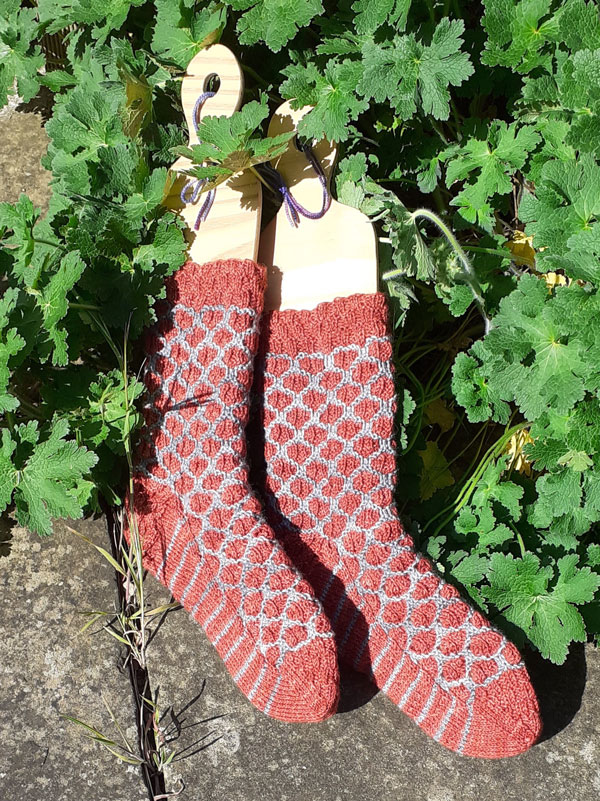

Mary Earis has produced a splendid collection of “Granny Knits” during the various lockdowns for some of her many grandchildren.
James Sanderson has relaxed with cross-stitch:

Ruth Sillar has been creating her own wrapping paper:

Please send pictures of your latest lockdown craftwork to Tina (website@stolaveschurch.org.uk) or Derek (derek@yorkcitycentrechurches.co.uk) so that they can be included next month!
Tina Sanderson
IN PRAISE OF THE DAILY SERVICE by Revd Derek Earis

BBC Radio 4’s Daily Service is the oldest programme continually broadcast by the BBC. The first edition was broadcast on Monday 2nd January 1928 from a studio in Savoy Hill and it has been broadcast ever since. The history can be seen here BBC Radio 4 – Daily Service – History of the Daily Service. Sadly it is now very much a minority broadcast and you have to be quite well organised to hear it (unless of course you still have a Long Wave receiver!) . By default Radio 4 broadcasts something else between 9.45am and 10am. To receive it on DAB here is the BBC’s advice from their web page – BBC Radio 4 – Daily Service. There is a schedule of Long Wave broadcasts with access on BBC Radio 4 LW – Schedules.
The newish BBC Sounds app does not make it particularly easy but if you search for Daily Service it will enable you to subscribe to it and access it. Or you could download an app such as radio.net from the Apple App store ( it is also on Google play for Android phone) and set it to BBC Radio 4 Long Wave. However you find your way to it the 15 minute slot seems to work well and is thoughtfully and carefully presented from a variety of standpoints and topics. As well as the old adage “Use it or lose it” I have found it a spiritual help, especially in these lockdown times. I commend it to you. You don’t, of course, have to listen to it at the time for it is available for some time afterwards from the BBC Radio 4 web page above.
Derek Earis
GOOD THINGS FROM THE PANDEMIC FOR ALL SAINTS PAVEMENT by James Ratcliffe
In some ways the pandemic came at a good time for All Saints, if such a thing is possible. At the start of March we embarked on a £150,000 renovation programme and so our last pre-lockdown service saw the altar encased in a wooden frame (the first and last time All Saints has had a baldacchino), the pulpit was entirely enclosed in plastic and pews were obstructed with scaffolding. You can watch an short informative video about the restoration here:
We were already wondering how we could cope as the work became more intensive and had started to make plans to upsticks to another venue.
Then the Prime Minister announced churches would close we quickly put together a plan. A pre-recorded Eucharist was filmed on the Saturday morning using the side chapel St Crux Altar as it was the only part of the church accessible. It wasn’t ideal but we managed. Once the full lockdown was announced the church was handed over full time to our wonderful builders and we moved online.


Mattins, Eucharist and Evensong moved online and kitchens, living rooms and offices became the church. Whilst very different it allowed us to be connected and reconnect with others who had moved away. We were very grateful to Rev’d Paul Edmondson who recorded a number of services from his home in Stratford upon Avon and it was wonderful to have a reading done by Ron Davis from Portugal. We also gained new members of the congregation from Cumbria, Suffolk and London. Whilst our numbers have never been very high, and we certainly never went viral, it has been a help to many to hear the comfortable words of the Prayerbook in their own homes. According to the logs, between March and December our services were watch 15,000 times, which dwarfs the figure normally in the register! Whilst many of these will have been fleeting glimpses, we hope that at least some of good news of Christ was passed on!
The time in lockdown allowed the building work to be completed and it looks marvellous. We now just need to pay for it! If anyone would like to make a donation to the restoration fund you can do so here:
https://www.mygivinghub.com/go?id=8V2Bq8M9KM
James Ratcliffe, Churchwarden
WARRENS by Iain Milne
Unable to travel during the present pestilence, Covid has provoked in me some unexpected realisations over Christmas and since. This all has to do with rabbits.
After twelve years’ residence in the city, government restrictions on December travel finally caused me to spend a Christmas in York. Like many people, I have got to know the streets within easy walking distance still better than previously, and casting my eyes further afield for a Christmastide walk in the local area which might blow out a few cobwebs, my wife and I tramped out towards and over the quietly interesting countryside south-east of York, passing the medieval moat of Langwith Lodge and reaching the large fields which were still furze-tufted common land when disease last turned this part of the world as upside-down as it has done today. By a series of paths (part of the Minster Way from York to Beverley) we reached a little corner where the peaty heath had unusually remained impervious to modern agriculture and an area of woodland is still marked on maps: “Rabbit Warren”.
Creeping through this morass, one is put in mind more of the red pandas of the eastern Himalayas and the monkeys of the Burmese jungle than of rabbits (of which we saw none). Invasive rhododendron must make the place a riot of colour later in the year. However, looking to the north of the soggy path, a more traditional landscape of birch and long grasses can be discerned rising amongst the more exotic sinews, from shallow pools and mounds, pointing to the locale’s older ecology. Back at home, poring over old maps, it emerged that this patch of land was a corner of Dunnington Common, and it is plain that it was a more tightly managed landscape even in the early 20th century, with heath, gorse bushes, and ordered patches of trees. It got me thinking about warrens. We see them so often marked on maps, and many suburban streets are called ‘Warren Close’ or ‘Warren Road’. Just off Heslington Common, which is now occupied by Fulford Golf Club, old maps show ‘Warren Farm’ (now demolished). But what actually lies behind these names? I set out to find out.
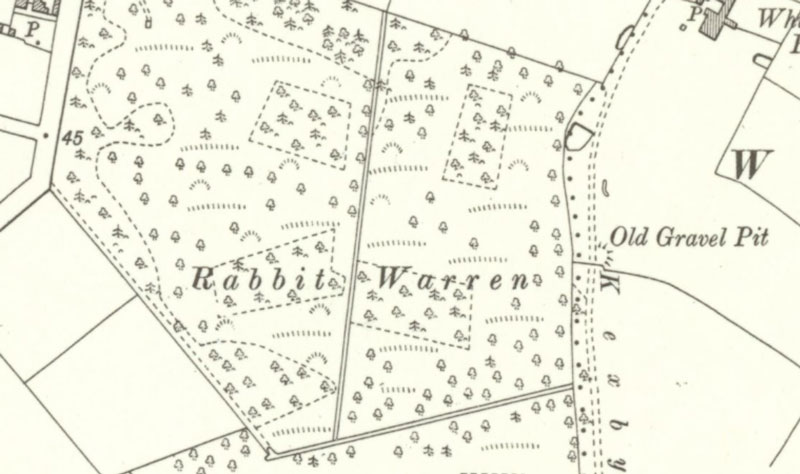
The Romans seem to have been the first to bring rabbits to England, as a luxury food, but these rabbits did not establish themselves in the wild and apparently died out with their masters – no Old English word for rabbit has survived. After the Norman Conquest, a few of the new elite had another go at introducing the species to inhospitably cold and wet English climes, and to do this they went to great efforts to create the first warrens, with artificial tunnels built in artificial mounds, in carefully managed areas bounded with ditches and fences. The mounds varied in form, but often looked like long, thin pillows and are known where they survive as ‘pillow mounds’. The rabbits were legally protected against poaching and were guarded by men in watch-towers who were sent to hand-feed their precious charges from time to time. These efforts eventually paid off, and rabbits, increasingly acclimatised, became more and more common as a way for lords to supply themselves with fine food and fur and make some money from manorial waste. This activity was at some expense to the lower orders whose pasture and crops the rabbits increasingly stole with legal impunity.
The special legal treatment of troublesome rabbits and their role as something of a status symbol made them targets of resentment amongst the lower orders. One poor rabbit belonging to an Abbot spent several hours ceremonially in the stocks of a Kentish market square as the Peasants’ Revolt passed through. Like the lords, the rabbits survived. Henry VIII had a set of rabbit fur-lined pyjamas and for generations a brace of coneys was not an unwelcome present from one squire to another. It was only the advent of improving agricultural methods in the mid-18th century which began to push rabbits to the fringes of the landscape. As enclosure became more of an option for common land, there were easier ways for a manorial lord to derive use from land formerly subject to rights like common pasturage and peat collection, and over the course of the 19th century rabbit meat became more of a poor man’s food, finally disappearing from the common table through a combination of postwar culinary aspiration and the rabbits’ own pestilence, myxomatosis. But pillow mounds, boundary ditches, and even warren lodges where warren-keepers lived are still a widespread feature of the English countryside for those with eyes to see them.



I have been enjoying Tom Williamson’s 2007 ‘Rabbits, Warrens, and Archaeology’ (ordered online posthaste amidst this grand inquiry). Particularly entertaining is the chapter detailing the incredulity and confusion of early 20th century archaeologists (and sometimes even country folk) faced with the physical remains of rabbit warrens perhaps still in use a generation before them, even while the last professional warreners were still at work in East Anglia with their dogs, nets, and staves. One archaeologist, a ‘Dr Warren’ of all things, insisted that certain humps and bumps were Iron Age ritual sites, even though, by his own account, “several old inhabitants of unimpeachable veracity” had firmly told him that “the mounds were made within their own memory to serve the purpose of rabbit warrens”.
What has specially interested me in all this is the penny dropping that part of the boundary of my parents’ suburban London garden is probably one of these mounds, or if not, part of an old warren boundary. Growing up I had never been satisfied with the prosaic explanation that it must have demarcated a field or been leftover spoil. A road around the corner was called ‘The Warren’, but having no idea that warrens involved any kind of long mounds I never made a connection. But as my mind’s eye turned on a garden I have become more and more wistful about after a full year without having a chance to visit, it has dawned on me that all sorts of features I have read archaeologists describing about warrens appear to be there – the long rectangular artificial mound on well-drained once-common land, a steeply embanked decline on the downhill slope, a hint of an old ditch up the hill, with spaced out holes leading to its interior, and map evidence not only referring to warrening on the hillside but suggesting the patches of furze and gorse often associated with their presence. A home for foxes in my lifetime, in my teens it didn’t occur to me that urban foxes are rarely afforded such convenient lodgings as a pre-tunnelled mound.
There is much more to be said on all this – on the quite distinct world of hare warrens, or the medieval iconography and symbolism of the rabbit. I mean to do a bit more poking about when I can to see whether there is anything left of the Heslington Common warren which once supplied many a stew and roast in Heslington Hall. If anyone has any observations on the warrens which once surrounded York I would be interested (I think there was one at Dringhouses, for example), and I would encourage you to have a dig about online in this strange world off the beaten track.
If one is not satisfied with the innocent curiosity all this represents, these rabbity doings offer points for a philosophical muse. I find the occasional discovery of things like the subject of warrens a bit like the discovery of God’s hand at work in the world – something that one can pass by for years until, for some odd reason, a penny drops, and you start to see it everywhere, ever more fascinating and leading you on. I think these warrens show the value of keeping going and keeping one’s interest in small things in times of tribulation, because there might be a lot more to delight in and to share than one might expect or be prepared to notice until one stumbles into it, if one allows oneself to. I think a circumspect readiness for unexpected joy serves well. York is certainly a place where the wells of historical imagination, with patience, never quite run dry. That moat I mentioned at Langwith hasn’t gone completely dry either and must have some little-heard tales to tell, and whilst the old fish pond of St Nicholas’ Hospital seems to have run pretty dry, it’s remarkable that such an echo lies quite ignored in plain sight – I wonder if it might spring to life again sometime when needed? But those are tales for another time.
Iain R J Milne
ST JOHN STREET WHATSAPP GROUP by Revd Derek Earis
St John Street where we live is one of the many Victorian terraces in York. It has the advantage of a splendid view of the Minster and is close to the centre. We love living there. However in the past it has not been a particularly friendly street. Its particular mix of working folk, retireds and students (the university of York St John is next door) meant that people did not see that much of each other, people kept themselves to themselves and there was quite a bit of change year to year in the let sector. Although we have had the house for many years (Mary bought it in the 70’s!) we only knew a handful of people.
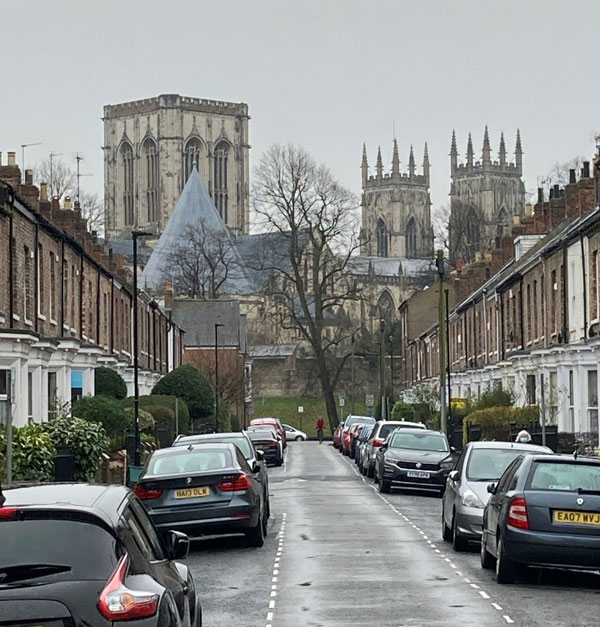
All of this changed with the pandemic. A community minded neighbour had the bright idea of forming a street WhatsApp group for mutual help and support. She took the trouble at the start of the Pandemic to leaflet all the houses and talk to as many as she could. She wrote “Hopefully this can be a space for us to offer support, physically (safely) and mentally, to our neighbours along the street. A way of keeping in touch and pulling resources especially in this period of social distancing. Advice, offers of help, requests, information and some humour would be good.”
It has achieved just what she hoped for with several messages on many days. There have been offers of support for a resident who is seriously ill, we have discussed community issues like traffic and the new restrictions, incidents of theft or anti-social behaviour, information about community services, the sharing of a Keffir starter kit (I’ll leave you to look up what this is if you don’t know!), offers of plants and shopping, requests for recommendations for trades, greetings and some much- needed humour. An interesting spin-off has been a separate litter group who have committed to regularly litter pick in the street. This is supported by the Council who have lent equipment and given training (yes, you do need training to litter pick safely!).
All in all as a result of the pandemic the street has become a more caring community, people know one another better and know where to turn for help. Although it is a shame that something as destructive as the pandemic has had to be the catalyst, some good has indeed come out of evil and we hope that when this crisis is past such community concern and involvement will continue and prosper.
Derek Earis
CHRISTMAS QUIZ SOLUTIONS

Question: What did the other reindeer not let Rudolph do because of his shiny red nose? Play in any reindeer games
Question: How many ghosts show up in A Christmas Carol? There were 4 of them. The ghosts of Jacob Marley, Then Scrooge Past, Present, and Future.
Question: Who was the mother of the Virgin Mary? St Anne
Question: What are the traditional names of the three wise men? Melchior, Caspar and Balthazar
Question: The movie Miracle on 34th Street is based on a real-life department store. What is it? Macy’s
Question: What is the origin of the name Santa Claus? St Nicholas
Question: When was the first Christmas tree in Trafalgar Square donated and from which country? 1947 from Norway
Question: Who wrote the Christmas speech of King George V in 1932? Rudyard Kipling
Question: What was given on the seventh day of Christmas? Seven Swans a Swimming, Six Geese a Laying, Five Golden Rings, Four Calling Birds, Three French Hens, Two Turtle Doves and a Partridge in a Pear Tree.
Question: Elvis isn’t going to have a white Christmas he’s going to have a…. Blue Christmas
Question: What do people traditionally put on top of a Christmas tree? A star
Question: In Home Alone, where are the McCallisters going on vacation when they leave Kevin behind? Paris
Question: In the classic Christmas movie, How The Grinch Stole Christmas, the Grinch was described with three words. What are they? Stink, Stank Stunk
Question: In which modern-day country was St Nicholas born in? Turkey
Question: In the movie It’s A Wonderful Life, what happened every time a bell rang? An angel got its wings
Question: What words follow “Silent Night” in the song? Holy Night
Question: Which Hollywood actor played six different roles in The Polar Express? Tom Hanks

